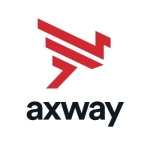What is most valuable?
We're using this product for managed file transfer. This gives you the ability to isolate a source system and a target system. You stick a Sterling managed file transfer in the middle, which allows you to deploy that isolation. It gives you the ability to replay the data in case of a failure, allows you to retry, and gives you extensive error notification.
It has many more capabilities, but we are using it as a managed file console. Sterling is a full B2B platform. This means you can do a lot of data transformation and things like that.
This has become our new file hub. Any data coming from any partner first hits Sterling. It provides a whole security layer. It has become our security. A component of Sterling is housed in the so-called “DMZ”, demilitarized zone.
A simple advantage is you are providing a proxy. This means that the outside world does not know where they are sending their data. They send it to Sterling. Sterling manages the data and determines where it goes in the environment.
Due to the way Sterling is designed, you do not open your firewalls for incoming streams at all. Sterling has a proprietary way of communicating between the secure network and the DMZ that allows you to completely protect your environment from outside attacks.
How has it helped my organization?
It is now our core managed file transfer platform.
What needs improvement?
Better integration with other IBM products is definitely the main piece with room for improvement.
What do I think about the stability of the solution?
It's very stable, but it's got its quirks. For example, all the file-based data is stored in a database.
There is an option for a user file system, but the recommended approach by IBM is primarily to use a database to store all the file data. This is not an optimum way to do things. We're already running into a lot of database space issues, in archiving, etc. But, again, that is implementation criteria.
What do I think about the scalability of the solution?
Scalability is perfectly fine. You can do whatever you want. You can scale it up as much as you want. We're nowhere near being in a position where we will be running into capacity issues. However, I believe it's highly scalable.
Which solution did I use previously and why did I switch?
We were using a simple FTP server that was sitting in the DMZ. We really needed a fully functioning platform and managed file transfer. This solution provided that.
We changed solutions because we looked at the stability of the product and the company's commitment to it.
We looked at what we were replacing in terms of our core integration product, which was already a product that IBM had acquired. It had to become an IBM product.
Certain parts of what we had in the environment were maybe usable by IBM. The reusability of its SAP infrastructure was a key decision.
How was the initial setup?
I was involved in the setup. It was very complex.
Different components need to be in the DMZ. There is the authentication piece, which probably requires integration with something like Active Directory, which we didn't go with.
We're using Sterling's own data store. The sheer number of pieces and the communication, especially the communication between Sterling and IBM's other products, is not evolved because IBM acquired this company recently, relatively speaking. The integration between its core ESB and Sterling is not well defined.
In fact, we went down one route by using Connect:Direct. We actually had to abandon it after putting in a substantial amount of work. We then went with a simple FTP approach after that.
It seems like Sterling continues to operate as a very independent company within IBM, and that's a problem.
Which other solutions did I evaluate?
We evaluated Oracle, IBM, and SAP.
In terms of selecting a vendor, we certainly look at their reputation and the quality of their products. We look at their ability to stand behind their products and improve them. IBM is very committed to their products, their platform, and building it.
What other advice do I have?
If you are looking at the solution as a managed file transfer tool, it does the job. There are probably similar products out there, just from an MFT perspective.
Sterling has integrated itself as a B2B platform. This is excellent, because it has many capabilities that we are not using currently. It is a full replacement for EDI, but we're not using it currently.
I know that the product is very capable. IBM needs to integrate it better into their portfolio of other products in order to make it work better.
I would recommend it, but be careful because it is complex and there are gaps in compatibility.
Disclosure: I am a real user, and this review is based on my own experience and opinions.












